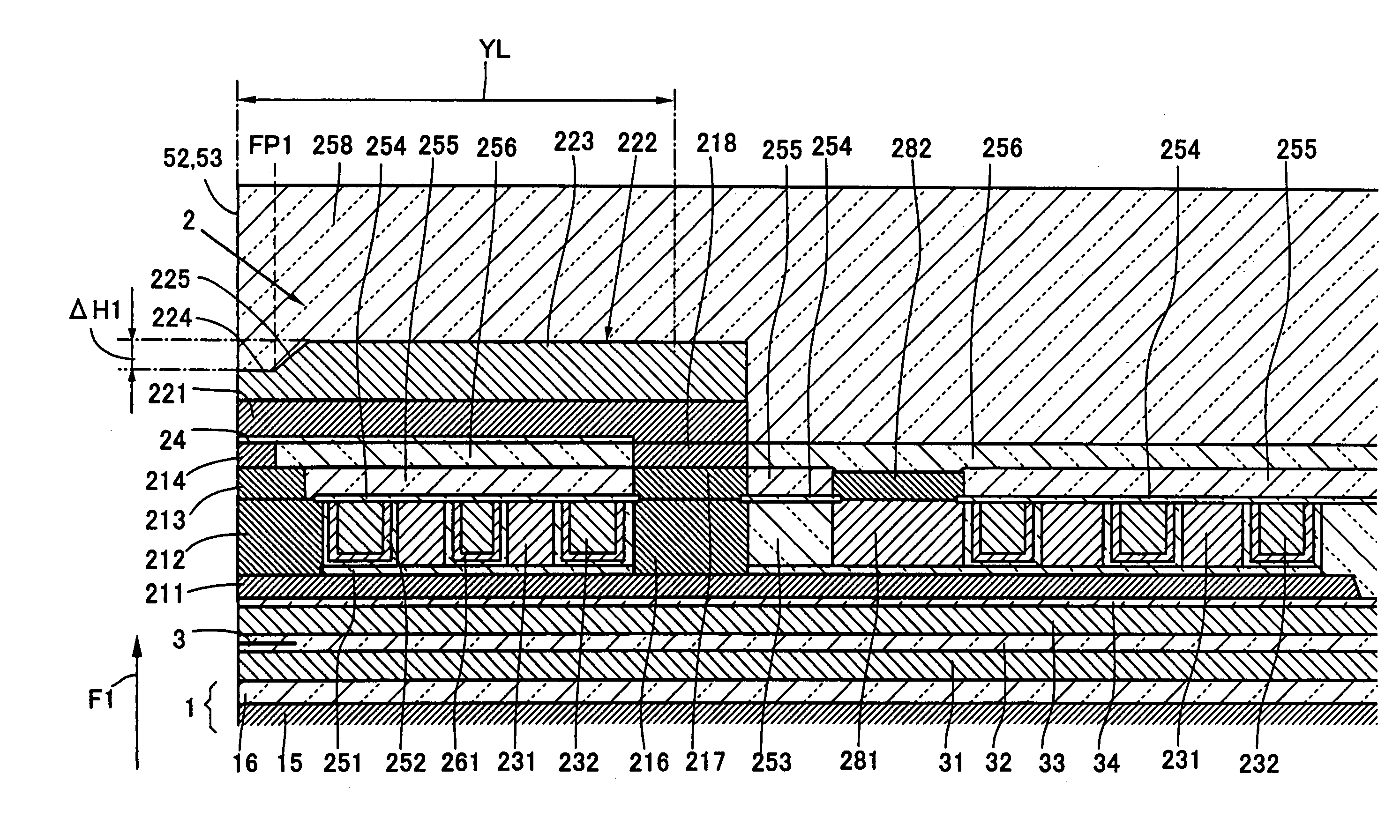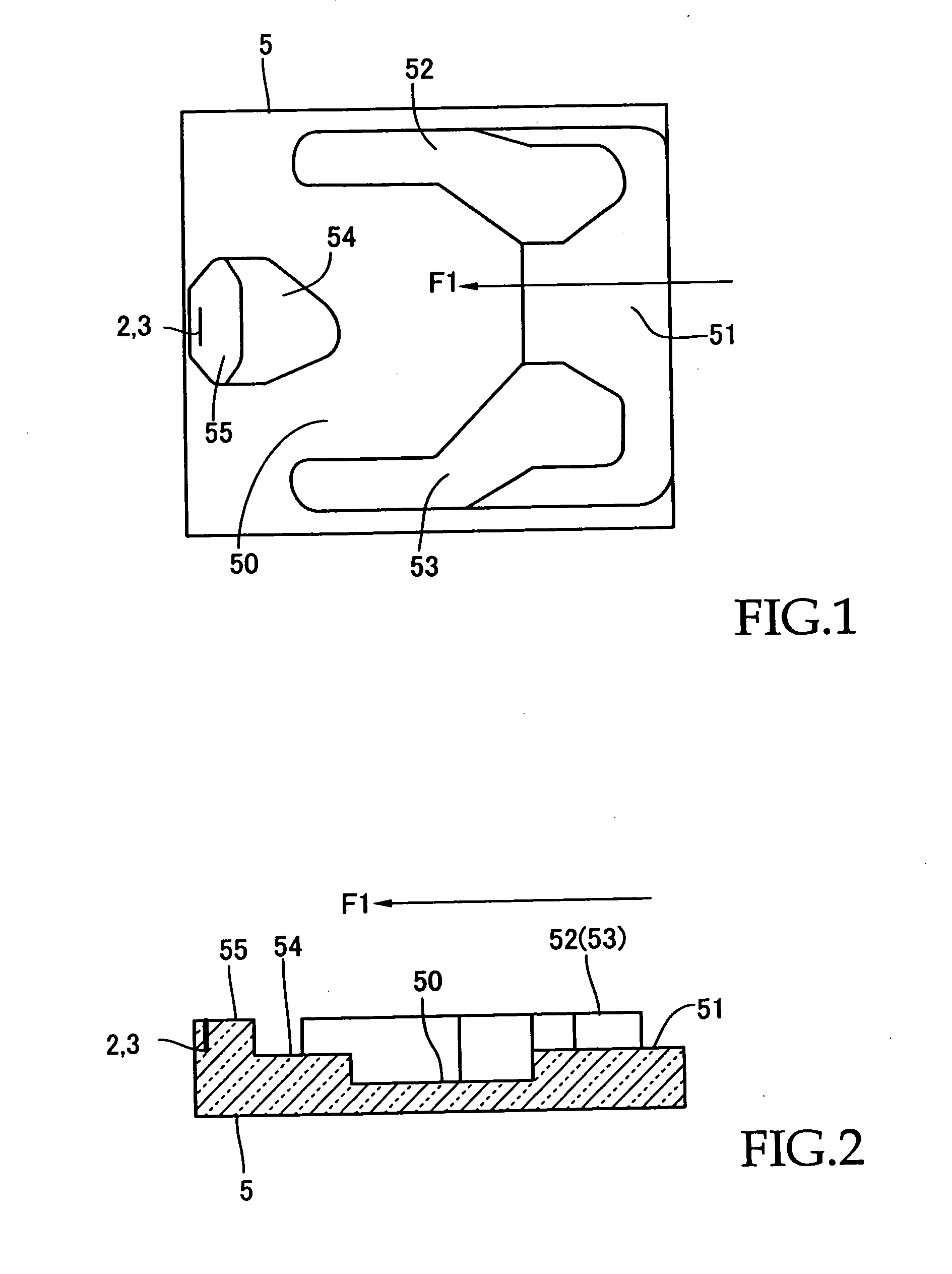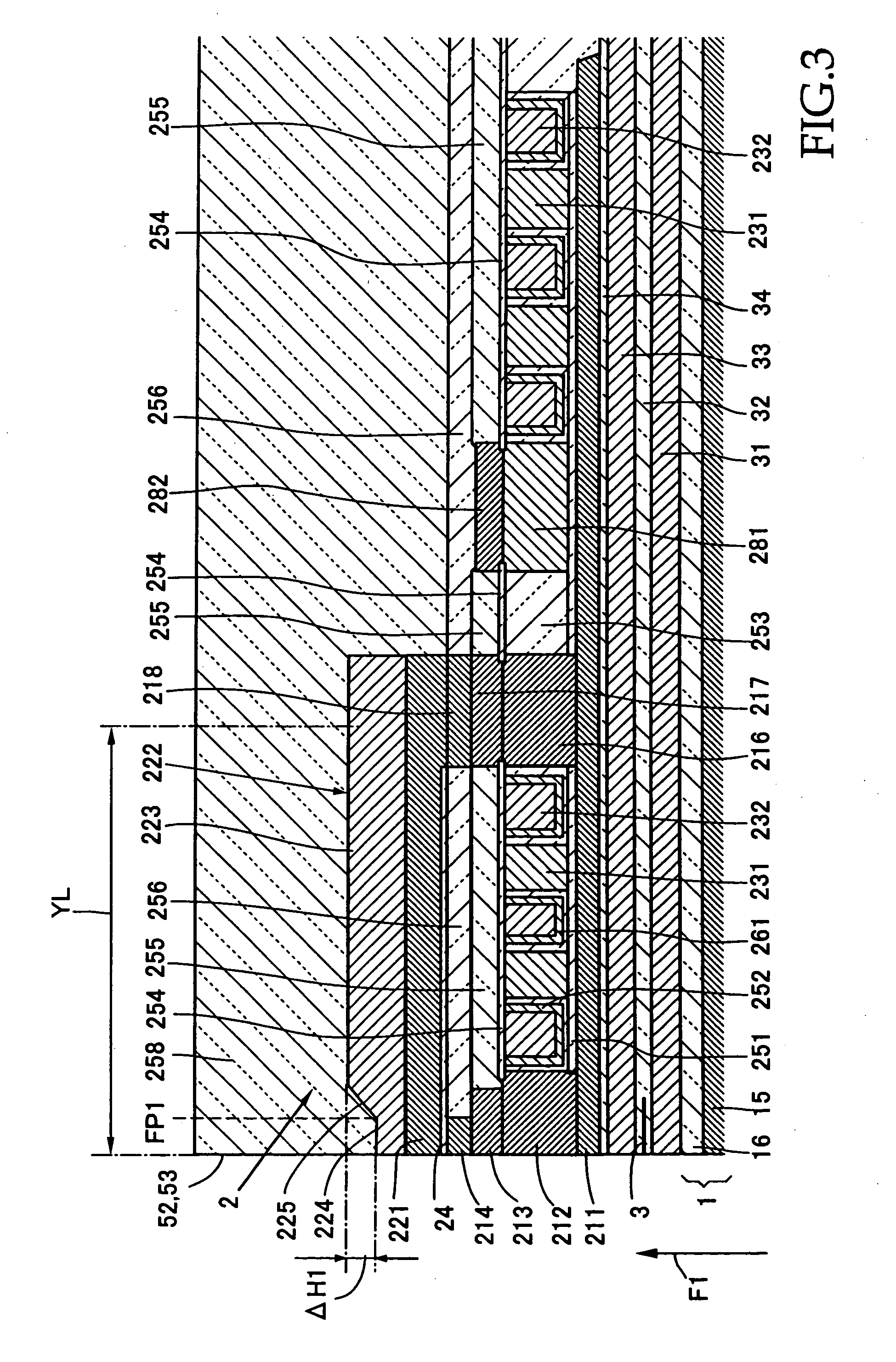Thin film magnetic head and manufacturing method thereof
a technology of thin film and magnetic head, which is applied in the construction of head windings, instruments, data recording, etc., can solve the problems of submicron process accompanied by problems, degradation of write ability, and various problems to be solved in the writing element, so as to reduce the resistance of the coil and the quantity of generated heat, the effect of increasing the sectional area and increasing the number of coil turns
- Summary
- Abstract
- Description
- Claims
- Application Information
AI Technical Summary
Benefits of technology
Problems solved by technology
Method used
Image
Examples
embodiment 1
(1) Embodiment 1
[0173] Embodiment 1 related to a manufacturing method is a process of manufacturing a thin film magnetic head of a first aspect having a first coil 231 and a second coil 232 (FIGS. 1 to 6). It is notified in advance that processes illustrated in FIGS. 11 to 44 are performed on a wafer.
[0174] First, referring to FIG. 10, on an insulating film 16 deposited on a base body 15 there are formed a first shield film 31, a read element 3, an insulating film 32, a second shield film 33, an insulating film 34 and a first magnetic film 211 by means of publicly known processes. After that, an insulating film 251 is formed on the flat surface of the first magnetic film 211, the insulating film 251 having an area slightly larger than an area necessary for forming a coil, and then a seed film 260 is formed on the surface of the insulating film 251. The seed film 260 is formed so as to cover the surface of the insulating film 251 and the surface of the first magnetic film 211. The s...
embodiment 2
(2) Embodiment 2
[0217] Embodiment 2 relates to a method for manufacturing a thin film magnetic head shown in FIGS. 7 and 8. FIGS. 47 to 65 show a process of manufacturing the same. It is notified in advance that processes illustrated in FIGS. 47 to 63 are also performed on a wafer.
(A) Process Leading to a State of FIG. 47.
[0218] Referring to FIG. 47, on an insulating film 16 deposited on a base body 15 there are formed a first shield film 31, a read element 3, an insulating film 32, a second shield film 33, an insulating film 34 and a first magnetic film 211 by means of publicly known processes.
[0219] The first magnetic film 211 can be made of a plating film of NiFe (80%:20%), NiFe (45%:55%) or CoNiFe. The first magnetic film 211 may be made of a sputtering film of FeAlN, FeN, FeCo, CoFeN, FeZrN or the like with a thickness of 0.5 to 0.6 μm.
[0220] After that, an insulating film 251 is formed, for example, 0.2 μm thick on the flat surface of the first magnetic film 211, the insu...
embodiment 3
(3) Embodiment 3
[0250] Embodiment 3 is a process of manufacturing a thin film magnetic head shown in FIG. 9, and is illustrated in FIGS. 66 to 71. Processes, which have been illustrated and described in embodiment 1 or 2 and are also applied to embodiment 3, are referred to the description of embodiment 1 or 2 and the illustrations of the processes may be omitted.
(A) Process Leading to a State of FIG. 66
[0251] On an insulating film 16 deposited on a base body 15 there are formed a first shield film 31, a read element 3, an insulating film 32, a second shield film 33, an insulating film 34 and a first magnetic film 211 by means of publicly known processes. After that, an insulating film 251 is formed on the flat surface of the first magnetic film 211, the insulating film 251 having an area slightly larger than an area necessary for forming a coil. The insulating film 251 is formed so as to have openings in parts where a back gap portion and a pole portion are to be formed. After th...
PUM
| Property | Measurement | Unit |
|---|---|---|
| saturation magnetic flux density | aaaaa | aaaaa |
| width | aaaaa | aaaaa |
| saturation magnetic flux density | aaaaa | aaaaa |
Abstract
Description
Claims
Application Information
 Login to View More
Login to View More - R&D
- Intellectual Property
- Life Sciences
- Materials
- Tech Scout
- Unparalleled Data Quality
- Higher Quality Content
- 60% Fewer Hallucinations
Browse by: Latest US Patents, China's latest patents, Technical Efficacy Thesaurus, Application Domain, Technology Topic, Popular Technical Reports.
© 2025 PatSnap. All rights reserved.Legal|Privacy policy|Modern Slavery Act Transparency Statement|Sitemap|About US| Contact US: help@patsnap.com



